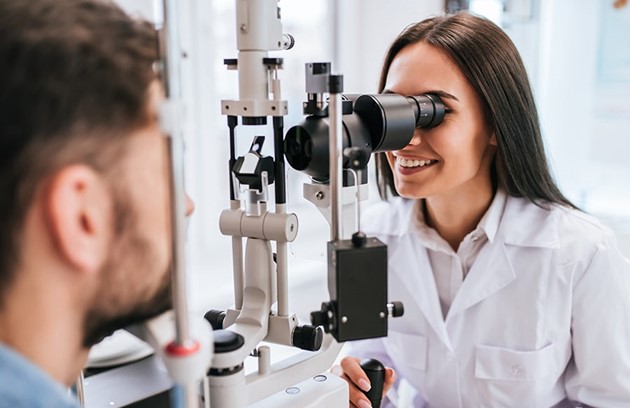Cataracts are the clouding of the eye’s natural lens, which is typically clear. This clouding results in blurred or hazy vision, making it difficult to see clearly. Cataracts can develop in one or both eyes and often progress slowly.
Prevention of Cataracts
While some factors leading to cataracts are beyond our control, several preventive measures can help reduce the risk.
- Protect Your Eyes from UV Radiation
Prolonged exposure to ultraviolet (UV) rays can increase the risk of cataracts. Always wear sunglasses that offer 100% UV protection when outdoors, and use wide-brimmed hats for added shielding.
- Maintain a Healthy Diet
A diet rich in antioxidants, particularly vitamins C and E, can help reduce the risk of cataracts. Include fruits and vegetables in your daily meals, and consider taking dietary supplements if needed.
- Quit Smoking
Smoking is a known risk factor for cataracts. Quitting smoking not only benefits your overall health but also reduces the likelihood of developing cataracts.
- Limit Alcohol Consumption
Excessive alcohol consumption has been linked to cataracts. Moderation is key when it comes to alcoholic beverages.
- Manage Diabetes
If you have diabetes, proper management of your blood sugar levels is essential. Uncontrolled diabetes can lead to the development of cataracts.
Common Symptoms
Recognizing the early signs of cataracts is crucial for seeking timely treatment. Some common symptoms include:
Blurred or hazy vision: Objects may appear less sharp or clear than they used to.
Sensitivity to light: Increased sensitivity to glare from lights, particularly when driving at night.
Difficulty with night vision: Difficulty seeing clearly in low-light conditions.
Fading or yellowing of colors: Colors may appear less vibrant or have a yellowish tint.
Double vision: Seeing multiple images of a single object.
Treatment Options
When cataracts significantly impact your vision and daily life, medical intervention may be necessary. Treatment options include:
- Cataract Surgery
Cataract surgery involves the removal of the cloudy natural lens and its replacement with an artificial intraocular lens (IOL). This is a safe and highly effective procedure that can restore clear vision.
- Lifestyle Adjustments
In the early stages of cataracts, you can make lifestyle adjustments to manage your vision. This may include using brighter lighting, using magnifying lenses, and updating your eyeglass prescription.
- Medications
In some cases, medications may be prescribed to manage symptoms, but they do not cure cataracts.
Cataracts are a common eye condition that can affect anyone, especially as they age. While not all cataracts can be prevented, adopting a healthy lifestyle, protecting your eyes from harmful UV rays, and managing underlying health conditions can reduce your risk. Recognizing the symptoms and seeking timely treatment are essential steps in maintaining good eye health.
Remember that only an eye care professional can diagnose and recommend appropriate treatments for cataracts. If you experience symptoms or have concerns about your vision, consult with an eye specialist for a personalized assessment and guidance.

